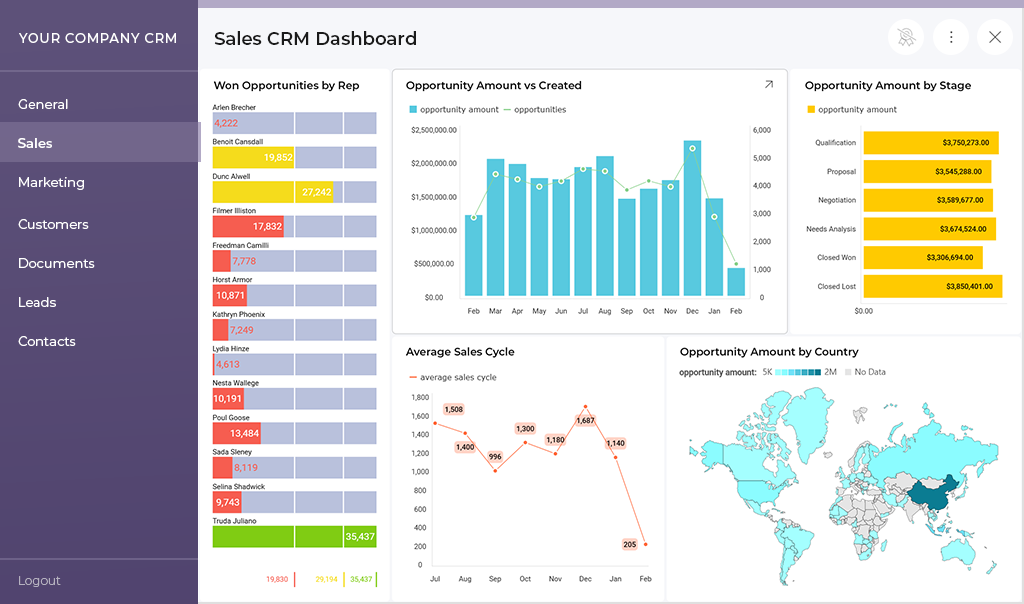
Scriptly ayuda a las farmacias a identificar tendencias en tiempo real con Reveal
En el mundo actual basado en datos, una solución de análisis integrado bien establecida e implementada es la base de cualquier negocio exitoso. Independientemente de su propia aplicación de software, al integrar potentes capacidades de análisis integrados, obtiene una gran ventaja en la gestión de recursos de forma más inteligente, la optimización de los flujos de trabajo y la optimización de su ROI.
Los datos contextuales ayudan a revelar dónde y cómo se pueden mejorar y optimizar los procesos y las decisiones para obtener el máximo rendimiento y rentabilidad.
El retorno de la inversión (ROI) es una métrica de relación financiera popular que se utiliza para evaluar la rentabilidad de una inversión. Por lo general, se calcula utilizando esta fórmula simple:
(Beneficio Neto / Inversión)*100
En el contexto de la analítica integrada, un ROI de analítica integrada es la contribución tangible de la solución a un negocio.
Puede medir el ROI de los análisis integrados probando la madurez de los datos de sus usuarios: ¿comenzaron más usuarios comerciales a comprender la información presentada en los paneles e informes, comenzaron a crearlos por su cuenta y comenzaron a guiar sus decisiones por datos? ¿perspectivas?
A menudo, esto sería suficiente para determinar que su inversión valió la pena. Sin embargo, aquí hay un par de formas de medir el ROI de los análisis integrados que son más sencillos y pueden proporcionarle números:
Uso de análisis
Este método de medición del ROI de la analítica integrada cubre en qué capacidad y con qué frecuencia sus usuarios utilizan sus productos/servicios de analítica. Puede generar y analizar fácilmente estos datos una vez que ya tenga una solución de análisis implementada.
Ejemplo: Supongamos que tiene un software de administración de propiedades y recientemente introdujo capacidades de BI como parte de su conjunto de funciones para ayudar a los clientes a analizar fácilmente los datos relacionados con sus unidades de alquiler vacacional. Con los datos que puede generar sobre cuántos de sus clientes han comenzado a usar activamente las capacidades de análisis, puede usar esta fórmula para medir el ROI:
((Valor por usuario activo * usuarios) / costo de la solución de análisis integrado) *100
*Tendrás que atribuir un valor monetario a cada usuario.
Mediante el uso de KPI como NPS (puntuación neta del promotor) o CSAT (puntuación de satisfacción del cliente) con valor para el cliente, puede asignar mejor un valor monetario a cada punto incremental al medir el ROI de la analítica integrada.
Puedes hacerlo usando la siguiente fórmula:
((Valor del cliente * NPS nuevo/NPS antiguo) / costo de la solución de análisis integrado) *100
Entonces, incorporó análisis en su aplicación y sus usuarios realmente lo están usando para tomar decisiones. ¡Excelente! Luego viene la pregunta de si eso está funcionando. Así es como se comprueba:
Ejemplo: Supongamos que las ventas de su tienda minorista han disminuido y su equipo decidió probar una nueva estrategia de venta que se basa en datos históricos y en tiempo real. Para el propósito del ejemplo, imaginemos que la estrategia fue un éxito y resultó en un +16% más de ventas. Puede utilizar esos datos para medir el retorno de la inversión de la analítica integrada para su negocio minorista.
((Ingresos de la iniciativa basada en datos)/costo de la solución de análisis integrada) *100

Por lo tanto, así es como puede medir el ROI de la analítica integrada para su negocio cuando está invirtiendo en una solución de este tipo. Sin embargo, tenga en cuenta que los usuarios de su producto/servicio también están haciendo una inversión cuando compran su producto de software, incluidas las capacidades de análisis integradas, por lo que también medirían el ROI de su negocio. Con esto en mente, asegúrese de invertir en una solución de análisis integrada que proporcione un valor real para todos los usuarios de datos, tanto internos como externos.